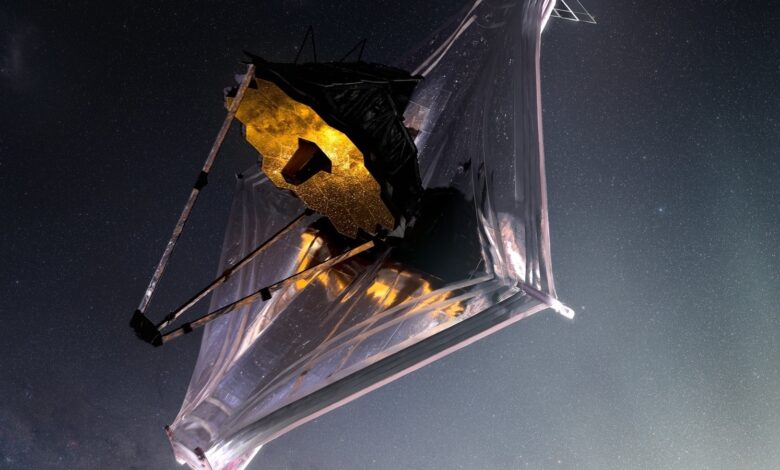OH! James Webb Space Telescope shows galaxies could form much earlier than thought

According to observations from the James Webb Space Telescope, the first galaxies may have formed much earlier than previously thought.
The first galaxies may have formed much earlier than previously thought, according to observations from the James Webb Space Telescope that are reshaping astronomers’ understanding of the early universe .
Researchers using the powerful observatory have now published papers in the Astrophysical Journal Letters, documenting two particularly bright, exceptionally distant galaxies, based on data collected over the first few days. since Webb went live in July.
Astronomers on a NASA press call said on Thursday that their extreme brightness points to two intriguing possibilities.
The first is that these galaxies were very large, with many low-mass stars like present-day galaxies, and must have started forming 100 million years after the Big Bang 13.8 billion years ago.
That’s 100 million years earlier than the current end of the so-called cosmic dark ages, when the universe contained only gas and dark matter.
A second possibility is that they are made up of “Population III” stars, which have never been observed but are theoretically thought to be made up of only helium and hydrogen, before heavier elements existed. .
Because these stars burn so brightly at extreme temperatures, the galaxies they’re composed of would not need to be so massive to account for the brightness Webb saw and may have begun to form afterward.
“We’re seeing such bright galaxies at such a very early time that we’re not really sure what’s going on,” Garth Illingworth of the University of California at Santa Cruz told reporters. this”.
The rapid discovery of galaxies also defied expectations that Webb would need to survey a much larger region of space to find such galaxies.
Astrophysicist Jeyhan Kartaltepe of the Rochester Institute of Technology added: “It is a little surprising that so many objects were formed so early.
– The farthest starlight –
The two discovered galaxies must have existed between 450 and 350 million years after the Big Bang.
The second of these, called GLASS-z12, currently represents the most distant starlight ever seen.
The farther away objects are from us, the longer it takes for their light to reach us, and so looking into the distant universe is looking into the deep past.
Because these galaxies are so far away from Earth, when their light reaches us, it has been stretched by the expansion of the universe and shifted to the infrared region of the light spectrum.
Webb can detect infrared light at a much higher resolution than any previous device.
Illingworth, co-author of the GLASS-z12 paper, told AFP that dismantling the two competing hypotheses would be a “real challenge”, although the idea of Population III was more appealing to him, as it would not require overturning existing cosmological models.
The teams are hoping to soon use Webb’s powerful spectroscopic tools – which analyze light from objects to reveal their detailed properties – to confirm the distances of galaxies and gain insights. more about their composition.
The Atacama Large Millimeter/Sublime Array (ALMA), a ground-based telescope north of Chile, could also help balance the masses of the two galaxies, which will help decide between the two hypotheses.
Tommaso Treu of the University of California at Los Angeles, principal investigator of one of Webb’s programs, summed it up: “JWST has opened a new frontier, bringing us closer to understanding how things begin as how”.



